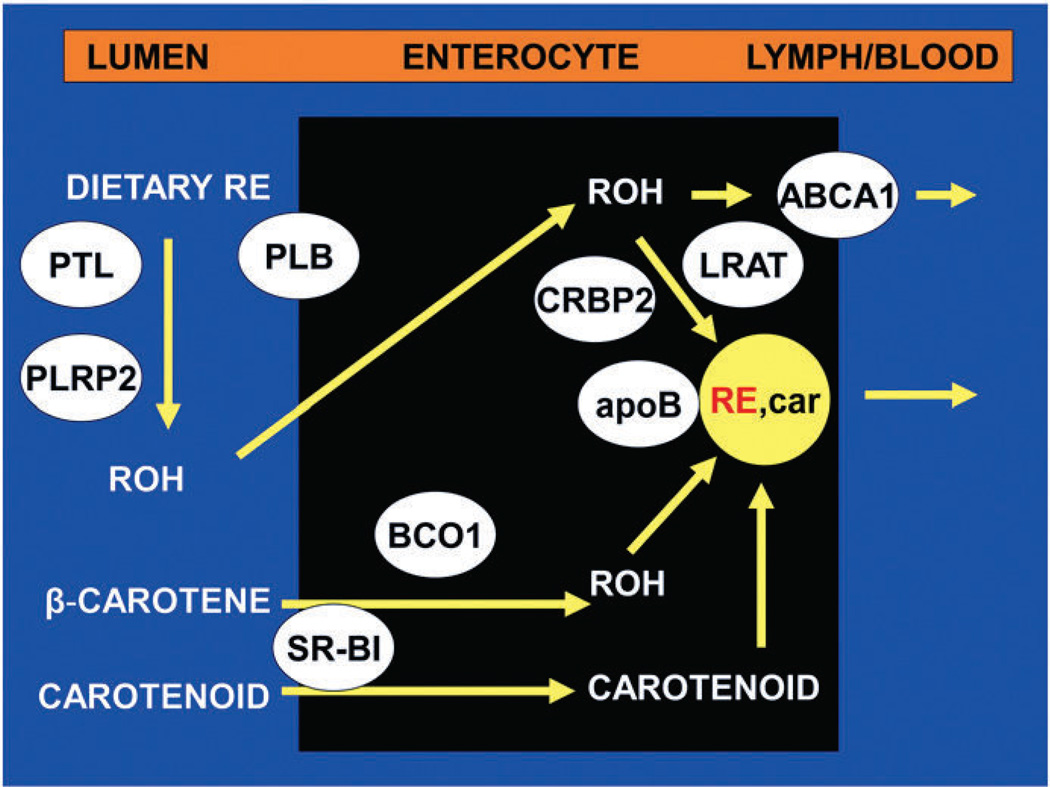Fig. 2.
Overview of intestinal absorption of dietary vitamin A and carotenoids. Dietary retinyl esters (RE) are hydrolyzed in the lumen by the pancreatic enzymes, pancreatic triglyceride lipase (PTL) and pancreatic lipase-related protein 2 (PLRP2), and the intestinal brush border enzyme, phospholipase B (PLB). Unesterified retinol (ROH) is taken up by the enterocyte, perhaps via passive diffusion. Once in the cell, retinol is complexed with cellular retinol-binding protein type 2 (CRBP2) and the complex serves as a substrate for re-esterification of the retinol by the enzyme lecithin:retinol acyltransferase (LRAT). The RE are then incorporated into chylomicrons, intestinal lipoproteins containing other dietary lipids (such as triglyceride, phospholipids, cholesterol, and cholesteryl esters) and apolipoprotein B (apoB). The incorporation of some of these lipids is dependent on the activity of microsomal triglyceride transfer protein. Dietary provitamin A carotenoids (e.g. β-carotene) and other carotenoids are taken up by intestinal cells perhaps by facilitated processes involving scavenger receptor class B type I (SR-BI). β-Carotene is partially converted to retinol by β-carotene oxygenase 1 (BCO1) and retinal reductase. The retinol so formed is then metabolized like that originating from preformed vitamin A. The intact carotenoids are incorporated into nascent chylomicrons. Chylomicrons containing newly absorbed retinyl esters and carotenoids (RE, car) are then secreted into the lymph. Unesterified retinol is also absorbed into the portal circulation and its efflux from the basolateral cell membrane is facilitated by the lipid transporter, ABCA1.

